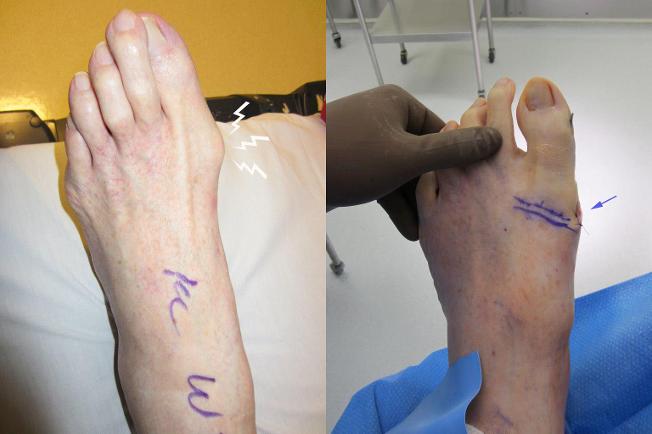What to Expect After Bunion Surgery
Bunion surgery is recommended when all conservative treatments no longer provide relief from bunion pain. Minimally invasive bunion surgery is a highly recommended technique for correcting bunions since it only requires a small incision to get the procedure done. It involves very minimal pain and swelling with fast recovery.
It is important to know the benefits and limitations of what bunion surgery can do post operatively. One important advantage is the drastic reduction of bunion pain. Second, is the improvement with the alignment of the big toe. Also, the tiny incision -- about 5mm -- used in minimally invasive bunion surgery is barely visible when healed, beautifying the foot further.
Limitations of bunion surgery include the restriction of wearing tight fitting pointy shoes (especially high heels) and avoidance of some activities such as ballet or sports.
The Procedure
The majority of bunion surgeries are done via OPD or outpatient basis. This means that you will go home the same day after surgery.
Upon admission, you will be evaluated by the anesthesia team. Afterwards, an ankle block is done to numb the foot. You are awake during the whole procedure; rest assured an anesthesiologist is right beside you at all times to administer additional medications if needed to make sure you are comfortable. Typically, the procedure will last for an hour, and then you will be transferred to the recovery room, in an hour or so you will be sent home.
Upon discharge you foot will be properly dressed and on a special boot. Antibiotics and pain medications are prescribed for take home medications.

Home Recovery
It is imperative that you follow the podiatric surgeon’s instructions at home as this will be a play a large part of the success of the surgery.
Dressing care
Keep the dressing dry and do not try to remove or manipulate the bandage. The bandage is arranged in a way to hold and support the toes while it heals. Avoid bathing, take sponge baths. A wet dressing can drastically delay recovery time, or even worse can cause an infection. After every follow-up, the wound and stitches are checked for dehiscence. An antibacterial solution or ointment is applied when needed and a fresh bandage is placed.
Try to Walk
Try to walk as soon as possible. Walking will stimulate blood circulation to your foot and will help hasten recovery time. Use a walker or crutches for the first few days after surgery and gradually put more weight on the foot as it heals.
Manage Pain and Swelling
Taking pain medications and elevating your foot can ease pain and swelling after foot surgery.
Call (239) 430-3668 (FOOT)
for more information on no scar bunion surgery